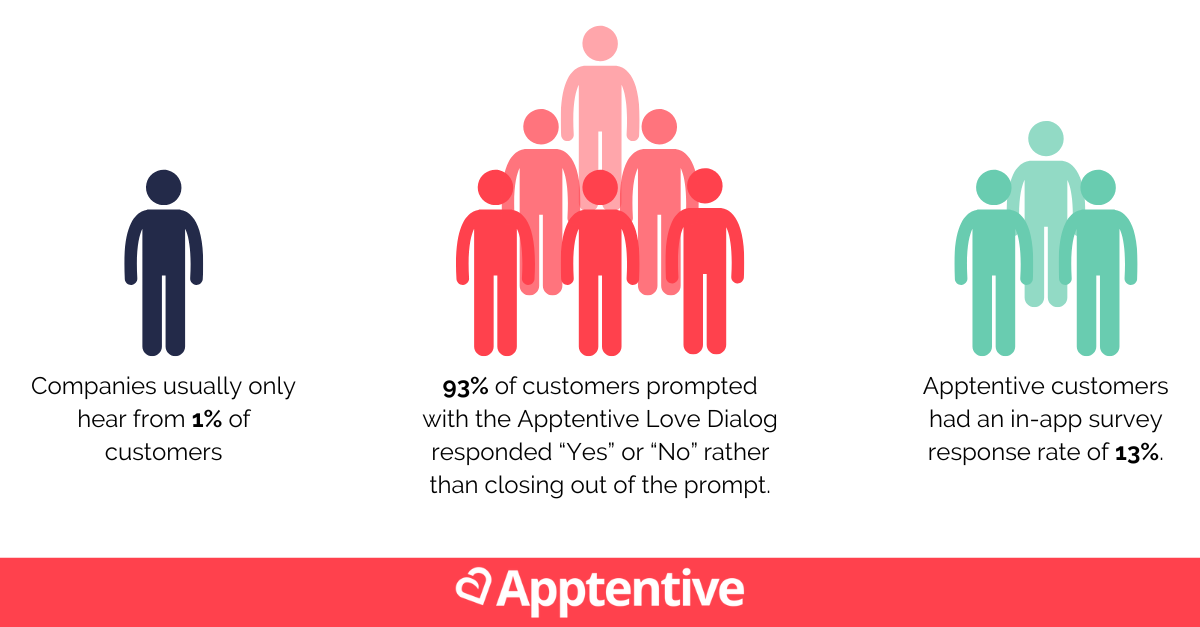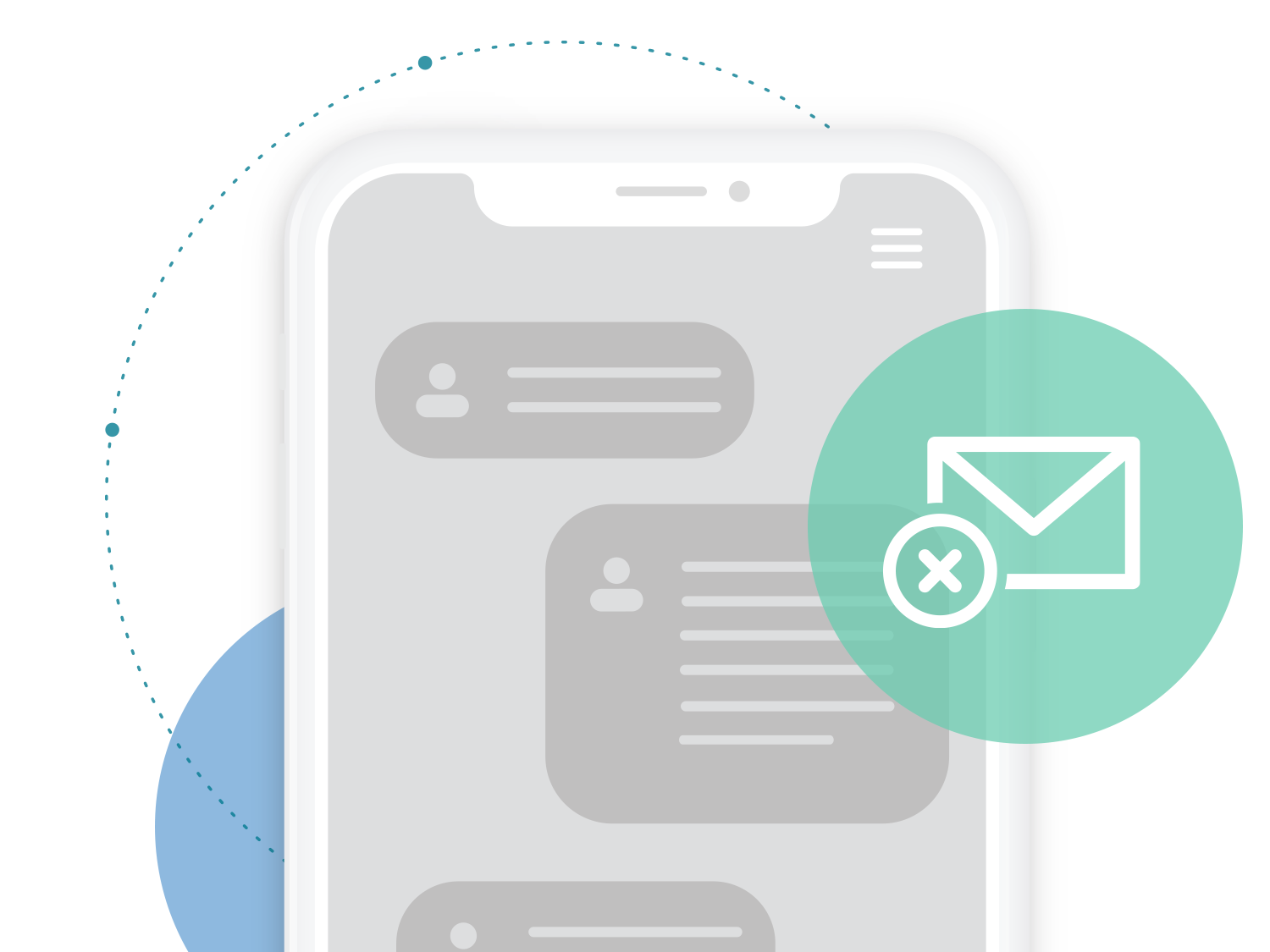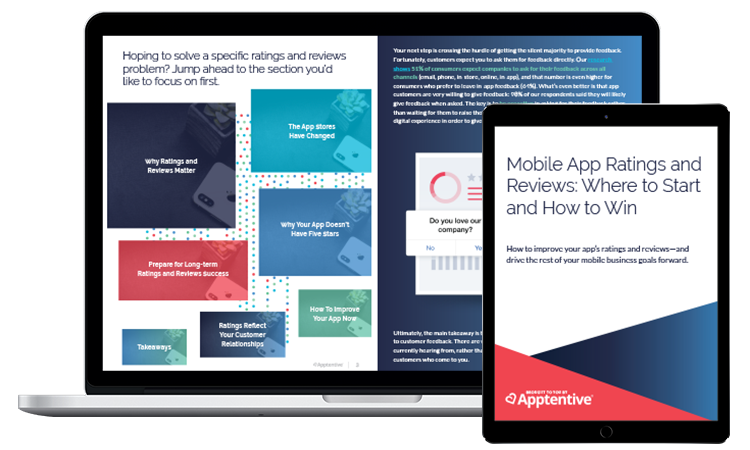Positive reviews tell you what people like about your app and what you are doing right. They make you feel good about your work and offer encouragement to keep going. At their best, they are both inspiring and validating, giving other potential customers in the app store a reason to buy or download your app.
Negative app reviews, however, are a different story. They make you second-guess yourself, and your app, and can give you a biased representation of quality.
The reality is this: You will get both positive and negative app reviews, and they’re equally important to the process of understanding customer sentiment and building a better mobile experience.
Here are 10 suggestions for dealing with those inevitable negative app reviews:
View all feedback as an indication of care
It’s important to recognize that a customer who chooses to engage with you is a rare gift, because they care enough to invest time in sharing their opinion. The vast majority of customers come and go without saying a word to you – having enough passion to engage is a sign of someone who cares about your app in some way.

Data from 2022 Mobile Customer Engagement Benchmark Report.
When you view all feedback, regardless of disposition, as a statement of care, embracing the feedback as an opportunity becomes much easier. Look at negative feedback with respect and amazement – how often do you take the time in your daily life to reach out and tell businesses about how they’ve made a mistake?
For most people, the answer is, “not often at all, it’d take too much time”. Your app customers are the same way – the ones who take the time to complain are special.
Avoid behind defensive
A natural tendency for all of us when we get criticized is to get defensive. When you’re defensive, you stake out a position to defend instead of truly embracing the customer’s point of view. In the world of customer service, this is a disaster – being on the opposite side of an issue with your customer results in antagonistic relationships rather than cooperative and collaborative ones.
Observe your own reactions and emotions in order to tamp down any natural defensiveness that arises.
Acknowledge the negative app reviews
One of the most powerful ways to deal with negative feelings and feedback is simply to acknowledge the validity of the customer’s feelings in the first place. By first communicating that the person who’s upset is valid in feeling upset, you can diffuse the tension that many people bring to a frustrating situation created by feeling like they need to fight to be heard.
Apologize
In your daily life, have you ever found yourself worked up and ready to argue with someone and then, upon hearing the words, “I’m sorry” felt a massive sense of relief and decompression?
Apologizing goes a LONG way with most people. It reminds them that you’re another human being and that you care about their feelings. When a customer is upset and frustrated, leading off with a sincere apology does wonders for turning a potential argument into a conversation.
Make it right
Sometimes an apology simply isn’t enough. Taking the time to go the extra mile and take care of your customer in a way that resolves their issue or delivers them unexpected value is usually well worth the cost to you and your company.
For example, if your app has in-app purchases and someone is complaining, offering them free credits might cost you a bit, but it’s a simple and straightforward way to put meaning and commitment behind your words. We see app developers routinely give virtual currency to frustrated customers, resulting in increases in retention and spend from the unhappy customer over the long run. Taking the stance that you’ll fix problems and make customers feel special pays dividends over the long run as they tell their friends about your approach and generosity.
Hear them out
In communication, the most important skill has nothing to do with what you’re saying. The most important skill is listening.
Remembering this fact when a customer brings negative comments your way will ground you in the importance of truly listening and understanding why they’re upset. Let your customers vent and express their feelings and concerns to you.
You might be surprised about what you learn as a result of truly listening and asking questions in order to deepen your understanding. Sometimes problems external to your app (iOS beta releases anyone?) are impacting your customer’s experience. You might find that a problem you’re completely unaware of is impacting the customer experience.
Hearing a customer out doesn’t mean that you have to give in and accept their negativity, it means seeking a better understanding of where they’re coming from and how you can be on the same page.
Avoid the trolls
Sometimes, negative comments simply come from people who enjoy creating a stir when they can remain anonymous. They love the attention they get from causing controversy.
This type of feedback is exceptionally dangerous because it can draw you into an argument that undermines your credibility. It adds no value to your product or community. While ignoring trolls isn’t always an option, if you’re going to engage with an obvious troll, don’t let them draw you into their level of discussion. Be polite, be nice and draw the line on how much time you’ll spend with trolls.
Set the record straight
While you certainly don’t want to get into a comment war with an unsatisfied customer, you don’t have to subject your company, your product or yourself to negative comments that are downright false.
If you run across comments that are not accurate, address them while giving the commenter the benefit of the doubt. Assume they didn’t know any better. Take this opportunity to educate them, and the rest of your community.
Once you resolve an issue, you should take the opportunity to let your community know that things are all copasetic as well. A simple follow up comment that reads:
I am glad we had the opportunity to fix this for you, please let us know if there is anything else we can do to make your experience with us a pleasurable one!
Learn from it
Take what your customers are saying and see how you can incorporate the feedback to create a better product. If it is a feature they want, work with to evaluate and add them. If the app is buggy, sort out your bugs.
Developing a great app is a journey and every piece of feedback, negative or otherwise, presents you with information that can be used to better your app. Embrace this opportunity to keep your community involved in the process of making something great. Making your customers feel as if they have some ownership in your app is a fantastic way to build your fan base and turn frustrated consumers into evangelists.

Take the conversation private
Public discourse with customers is often a poor way to handle complaints and problems. It lends itself to more black and white statements, a lack of empathy and speaking for an assumed audience. We highly recommend taking conversations private, which is one of the reasons why our in-app feedback tools are built to create 1:1 conversations with your app customers.
Private in-app feedback tools, like Message Center, are exceptional ways to increase the level of conversation you have with your frustrated customers.

Looking for more?
So that’s it, 10 tips for handling negative app reviews and feedback. We hope this post helps you manage the inevitable negative app reviews and boost five-star ratings.
For more on how to turn one-star reviews into five-star customers, grab your free copy of Mobile App Ratings and Reviews: Where to Start and How to Win now.


